Introduction
In this guide, you'll learn what ITIL is, its history, the details of the framework, its processes, the five Lifecycle and four Capability phases that these processes are related to, the different versions of ITIL, and its progression over the years.
Furthermore, we'll discuss what's new in the latest edition, ITIL certification and career paths, its importance for IT Service Management and what the future holds for the framework.
Consider this post the definitive guide to ITIL.
A one-stop shop to learn about the framework and how it can help you and your organisation.
We'll start with an initial overview of the framework, and then we'll dig deeper, discussing the various Lifecycle phases, and the processes contained within each phase.
Presumably you have decided to read this article as you have identified a gap in knowledge, either through a personal desire to learn more, or realisation that someone within your team, would benefit from learning more about the IT Infrastructure Library (more commonly known as ITIL of course).
Whatever the reason that has brought you to this point, we at Purple Griffon, strongly believe that the information that you will peruse within this document, and any subsequent links that you may decide to follow, will provide you with the basic understanding of ITIL, which may both improve your knowledge, and help resolve any issues back in the workplace that may require troubleshooting.
We believe that there is no substitution for our tutor-led, classroom based course where you and your fellow candidates can exchange information on specific approaches or how a certain challenge was addressed – but for those of you pushed for time, we also have e-learning courses available whereby you can study at your own pace.
The following pages provide a detailed view of the aims of the ITIL Lifecycle stages, an overview of the various processes (all 26 of them!), plus history, career paths and several other interesting aspects and views.
We hope that this sparks interest in this topic, and if you do wish to consider undertaking one of our ITIL training courses, please feel free to make contact with one of our Account Managers who can guide you with any questions you may have.
Or click here to take a look at our ITIL® 4 Foundation training course and certification page.
What is ITIL?

ITIL, formerly an acronym for Information Technology Infrastructure Library, is the worldwide de facto best-practice standard and framework for IT Service Management (ITSM).
It's the world's leading ITSM best-practice framework, and it's used by countless organisations across the globe, helping to streamline their IT services and align IT with the needs of the business.
Its adoption has dominated the IT service industry for many, many years and organisations from SMBs to global blue chip companies adapt and adopt the framework to suit their ever changing business needs.
ITIL is a set of core best-practice techniques that allow practitioners to design, develop, manage, and deliver IT services that are ultimately aligned with business needs and objectives.
The purpose of ITIL is to help standardise IT infrastructure and working practices to better facilitate these business needs.
ITIL consists of five key stages (phases), known as the Service Management Lifecycle, or Service Lifecycle.
These include:
- Service Strategy
- Service Design
- Service Transition
- Service Operation
- Continual Service Improvement
We'll discuss each Lifecycle stage in more detail later in this post but for now, these Lifecycle phases can be described in the following way.
ITIL Service Strategy

The Service Strategy phase provides guidance on how best to design, develop, and implement IT Service Management, from a strategic point of view.
It is a high-level strategic understanding of the service strategies which can be developed and implemented to give the business a clear advantage in the marketplace.
ITIL Service Design

The Service Design phase gives guidance on how best to design and develop services, as well as IT Service Management processes that will help to support any service strategies that have already been developed.
ITIL Service Transition

The Service Transition phase will help to teach IT professionals and their associates to better manage change in a more productive manner.
It provides guidance on how to effectively and efficiently transition new, or changed services into operational status, without causing disruption to other services or processes.
ITIL Service Operation
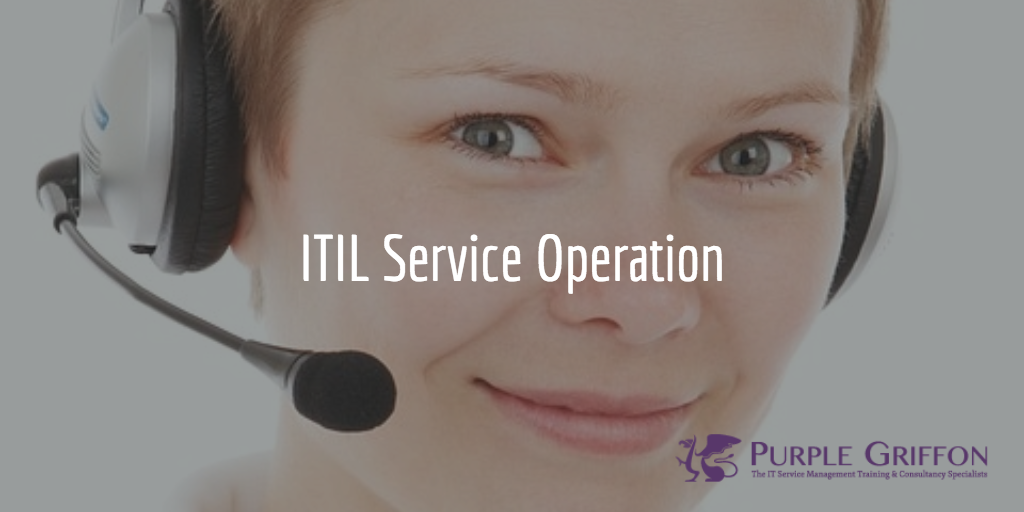
The Service Operation phase helps to guide IT professionals in the practical day-to-day aspects of business operations.
The idea is to keep services running smoothly, efficiently, reliably and to keep cost to a minimum.
ITIL Continual Service Improvement
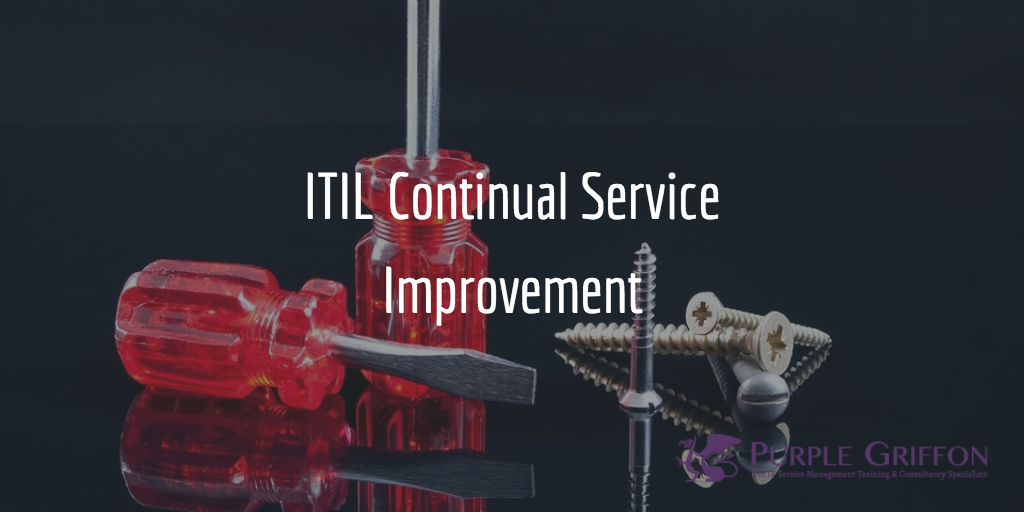
The Continual Service Improvement phase spans all other Lifecycle Phases and helps to provide a constant feedback loop, with continual assessment of the overall strategies and processes currently in place to see where improvements can be made.
CSI is a favoured starting point for those wishing to undertake the lifecycle route through to ITIL Expert as valid through all stages of the lifecycle. Tweet This
The 26 ITIL Processes

Contained within each Lifecycle Phase are a number of overlapping IT Service Management processes.
These processes are discussed in further detail later on in this guide, but the following brief overview should give you an idea of what each is used for and why.
7-Step Improvement Process (Continual Service Improvement)
This process is part of the Continual Service Improvement phase and provides guidance on how to measure and report on the service and its processes.
The seven steps include:
- What You Should Measure
- What Can Be Measured
- Gather Data
- Process Data
- Analyse Data
- Present and Use Information
- Implement Corrective Action
This process also contains two sub-processes:
The ITIL Service Measurement and Service Reporting “sub-processes” are key elements of the Continual Service Improvement Lifecycle Phase, although there are some ITIL advocates that view these as full-blown processes.
Their primary concern is the measurement of physical, service and system levels of IT service delivery and reporting on the results achieved by the business, specifically strategically and operationally, plus reporting on developments relating to Service Level Agreements.
ITIL Strategy Management for IT Services
ITIL Strategy Management for IT Services is primarily focused on assessing the service provider's capabilities, competitors, and offerings, as well as current and potential gaps in the market, to develop a business strategy that better serves customers.
ITIL Demand Management
The objective of ITIL Demand Management is to influence customer demand by understanding and anticipating that demand.
It is closely linked with Capacity Management to ensure that the service provider has sufficient capacity to meet the demand.
ITIL Financial Management for IT Services
The primary objective of the ITIL Financial Management for IT Services process is to manage a service provider's accounting, charging requirements, and budgeting.
This process contains four sub-processes:
Financial Management Support
Financial Planning
Financial Analysis and Reporting
Service Invoicing
Service Portfolio Management
The principal objective of ITIL Service Portfolio Management is to manage the service portfolio, ensuring the service provider has the correct balance of services available to meet the necessary business needs and outcomes at the appropriate level of investment.
ITIL Business Relationship Management
The objective of ITIL Business Relationship Management is to maintain a positive relationship with customers, identifying the needs of potential and existing customers, ensuring that the appropriate services are developed to meet those changing needs.
ITIL Service Catalogue Management
The goal of ITIL Service Catalogue Management is to ensure that a Service Catalogue is created and maintained, comprising accurate information on all of the operational services and those in development to be run operationally.
ITIL Availability Management
The objective of ITIL Availability Management aims to describe, analyse, plan, measure, and improve every aspect of the availability of IT services.
Furthermore, it's responsible for ensuring that all IT infrastructure, tools, roles, and processes are adequate for the agreed availability targets.
ITIL Capacity Management
The goal of ITIL Capacity Management aims to guarantee that the capacity of IT infrastructure and IT services can deliver the agreed upon service level targets in the most cost timely and profitable way.
A key input to SLM to ensure that the infrastructure is capable of delivering the service, in normal and disaster recovery situations. Tweet This
IT Service Continuity Management
The objective of IT Service Continuity Management (ITSCM) strives to manage the risks that may seriously impact IT services.
ITSCM guarantees that the IT service provider is always able to provide the minimum agreed on Service Levels, by reducing the risk associated with disaster events to an acceptable level while planning for the recovery of IT services. It should be designed to support ITIL Business Continuity Management.
ITIL Service Level Management
The aim of ITIL Service Level Management is to negotiate Service Level Agreements with customers and design services in accordance with agreed service level targets.
ITIL Service Level Management also has the responsibility of ensuring all Operational Level Agreements and Underpinning Contracts are suitable while reporting and monitoring on service levels.
ITIL Design Coordination
The objective of ITIL Design Coordination is to coordinate all service design processes, activities, and resources. It ensures the effective and consistent design of new or changed IT architectures, technology, information, service management information systems, services, processes, and metrics.
ITIL Information Security Management
The aim of ITIL Information Security Management is to ensure the integrity, availability, and confidentiality of an organisation's data, IT services, and information. It usually forms part of an organisation's approach to overall security management which has a wider scope than the IT service provider.
ITIL Supplier Management
ITIL Supplier Management aims to ensure that all contracts with suppliers underpin the requirements of the business making sure that all suppliers meet their contractual duties.
ITIL Transition, Planning and Support
The objective of ITIL Transition, Planning and Support aims to ensure the realisation of implementation projects for new IT services with the help of project management methodologies.
ITIL Change Management
The objective of ITIL Change Management aims to ensure that standardised procedures and methods are used to handle all changes to control IT infrastructure promptly and efficiently while minimising the impact and number of any related incidents upon IT services.
ITIL Service Asset and Configuration Management
The primary objective of ITIL Service Asset and Configuration Management aims to maintain the information about and the relationships of Configuration Items which are required to deliver an IT service
ITIL Release and Deployment Management
The aim of ITIL Release and Deployment Management is to plan, schedule and control the movement of releases to staging and production environments, to help ensure that the integrity of the production environment is protected and that the correct components are released.
ITIL Service Validation and Testing
ITIL Service Validation and Testing aims to ensure that all deployed releases and the resulting services meet the customer expectations while verifying that IT operations are able to support the service.
ITIL Change Evaluation
The objective of ITIL Change Evaluation is to assess major changes, such as the introduction of a new service, or a large change to an existing service before changes are allowed to proceed through the next phases of the lifecycle.
ITIL Knowledge Management
The aim of ITIL Knowledge Management is to gather, analyse, store and distribute knowledge and information throughout an organisation. Its primary purpose is to improve efficiency.
ITIL Event Management
The aim of ITIL Event Management is to monitor all events that occur throughout IT infrastructure, allowing for the normal operation of IT services while detecting and escalating any exceptional conditions.
ITIL Incident Management
The primary goal of ITIL Incident Managementis to restore a normal service operation as promptly as practicable while minimising the impact on business operations. It ensures that the best possible levels of service availability and quality are maintained.
ITIL Request Fulfillment
The aim of ITIL Request Fulfillment is to fulfill Service Requests, which are usually minor changes, or requests for information.
ITIL Problem Management
The objective of ITIL Problem Management is to manage successfully the lifecycle of all problems that arise by preventing problems and incidents from occurring in the first instance.
ITIL Problem Management is also responsible for eliminating recurring incidents while minimising the impact of incidents that can't be prevented.
(Click here if you want to learn more about our ITIL problem management training)
ITIL Access Management
The aim of ITIL Access Management is to grant authorised users the rights to use a service while preventing access to those users that are not authorised.
The History of ITIL

ITIL was originally developed by the UK Government's Central Computer and Telecommunications Agency (CCTA) in the 1980s due to a growing dependence on IT, and the realisation that without standardised practices, government agencies and private contractors would independently develop their IT service management practices, causing possible incompatibility issues between services.
Since 1989, a series of books on ITIL have been published by the Office of Government Commerce / (OGC), with each edition expanding on and adding to the previous editions.
A completely revised version of ITIL was published in 2007 by the OGC. Known as ITIL Version 3 (ITIL v3), it reflected the experiences gained over the previous decades and from the previous editions of the framework, placing greater emphasis on generating business value.
ITIL v3 (ITIL 2007) is streamlined around a set of five core publications, together forming the ITIL v3 Service Lifecycle.
- Service Strategy
- Service Design
- Service Transition
- Service Operation
- Continual Service Improvement
In 2011 ITIL received an update (commonly known as ITIL 2011) which took into account the feedback received from practitioners and the training community.
In 2014 the UK Government and the London based organisation Capita PLC embarked on a joint venture giving rise to the emergence of AXELOS.
AXELOS' primary aim is to manage, develop and operate qualifications in best practice, methodologies formerly owned by the OGC.
ITIL Lifecycle Phases in Detail
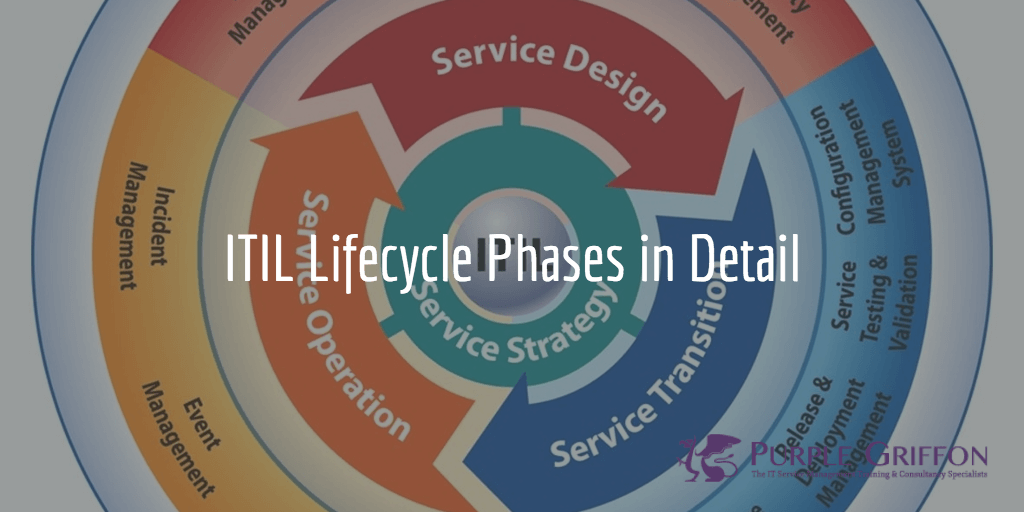
ITIL is streamlined around a set of five core publications known as the Service Lifecycle.
In this section, we'll discuss in further detail what each Lifecycle Phase is and how they relate to IT Service Management.
Service Strategy
As mentioned previously in this post, ITIL Service Strategy aims to decide ultimately on the best strategy to serve customer needs.
The phase starts by assessing these customer needs and the marketplace as a whole. From this analysis, it is determined which services should be offered and which capabilities should be developed by the IT organisation to fulfill these requirements.
ITIL Service Strategy's ultimate goal is to make the IT organisation act and think in a strategic manner.
There are five key processes outlined in ITIL Service Strategy which help to develop the overall strategy for IT services, these include:
Strategy Management for IT Services
Process Objective:
‘To assess the service provider's offerings, capabilities, competitors as well as current and potential market spaces to develop a strategy to serve customers. Once the strategy has been defined, Strategy Management for IT Services is also responsible for ensuring the implementation of the strategy.'
Service Portfolio Management
Process Objective:
’To manage the service portfolio. Service Portfolio Management ensures that the service provider has the right mix of services to meet required business outcomes at an appropriate level of investment.'
Financial Management for IT Services
Process Objective:
‘To manage the service provider's budgeting, accounting and charging requirements.'
Demand Management
Process Objective:
’To understand, anticipate and influence customer demand for services. Demand Management works with Capacity Management to ensure that the service provider has sufficient capacity to meet the required demand.'
Business Relationship Management
Process Objective:
‘To maintain a positive relationship with customers. Business Relationship Management identifies the needs of existing and potential clients and ensures that appropriate services are developed to meet those needs.'
Source: Wikipedia
Service Design
The focus of ITIL Service Design is centred around the identification of service requirements.
It devises new service offerings, as well as improvements and changes to existing ones.
ITIL Service Design consists of 11 core processes.
Design Coordination
Process Objective:
‘To coordinate all service design activities, processes, and resources. Design coordination ensures the consistent and efficient design of new or changed IT services, service management information systems, architectures, technology, processes, information and metrics.'
Service Catalogue Management
Process Objective:
‘To ensure that a Service Catalogue is produced and maintained, containing accurate information on all operational services and those being prepared to be run operationally. Service Catalogue Management provides vital information for all other Service Management processes: Service details, current status, and the services' interdependencies.'
Service Level Management
Process Objective:
‘To negotiate Service Level Agreements with the customers and to design services by the agreed service level targets. Service Level Management is also responsible for ensuring that all Operational Level Agreements and Underpinning Contracts are appropriate, and to monitor and report on service levels.'
Risk Management
Process Objective:
‘To identify, assess and control risks. This includes analysing the value of assets to the business, identification of threats to those assets, and evaluating how vulnerable each asset is to those threats.'
Capacity Management
Process Objective:
‘To ensure that the ability of IT services and the IT infrastructure can deliver the agreed service level targets in a cost-effective and timely manner. Capacity Management considers all resources required to provide the IT service, and plans for short, medium and long-term business requirements.'
Availability Management
Process Objective:
'To define, analyse, plan, measure and improve all aspects of the availability of IT services. Availability Management is responsible for ensuring that all IT infrastructure, processes, tools, roles, etc. are appropriate for the agreed availability targets.'
IT Service Continuity Management
Process Objective:
‘To manage risks that could seriously impact IT services. ITSCM ensures that the IT service provider can always provide minimum agreed Service Levels, by reducing the risk from disaster events to an acceptable level and planning for the recovery of IT services. ITSCM should be designed to support Business Continuity Management.'
Information Security Management
Process Objective:
‘To ensure the confidentiality, integrity, and availability of an organization's information, data, and IT services. Information Security Management usually forms part of an organizational approach to security management which has a wider scope than the IT Service Provider.'
Compliance Management
Process Objective:
‘To ensure IT services, processes and systems comply with enterprise policies and legal requirements.'
Architecture Management
Process Objective:
‘To define a blueprint for the future development of the technological landscape, taking into account the service strategy and newly available technologies.'
Supplier Management
Process Objective:
‘To ensure that all contracts with suppliers support the needs of the business and that all suppliers meet their contractual commitments.'
Service Transition
The ITIL Service Transition Lifecycle Phase builds and deploys new or modified services.
It also coordinates all changes to services and Service Management processes.
ITIL Service Transition is made up of eight core processes.
Change Management
Process Objective:
‘To control the lifecycle of all Changes. The primary goal of Change Management is to enable beneficial Changes to be made, with minimum disruption to IT services.'
Change Evaluation
Process Objective:
‘To assess significant Changes, like the introduction of a new service or a substantial change to an existing service, before those Changes are allowed to proceed to the next phase of their lifecycle.'
Project Management (Transition Planning and Support)
Process Objective:
‘To plan and coordinate the resources to deploy a major Release within the predicted cost, time and quality estimates.'
Application Development
Process Objective:
‘To make available applications and systems which provide the required functionality for IT services. This process includes the development and maintenance of custom applications as well as the customization of products from software vendors.'
Release and Deployment Management
Process Objective:
‘To plan, schedule and control the movement of releases to test and live environments. The primary goal of Release Management is to ensure that the integrity of the live environment is protected and that the correct components are released.'
Service Validation and Testing
Process Objective:
‘To ensure that deployed Releases and the resulting services meet customer expectations, and to verify that IT operations can support the new service.'
Service Asset and Configuration Management
Process Objective:
‘To maintain information about Configuration Items required to deliver an IT service, including their relationships.'
Knowledge Management
Process Objective:
‘To gather, analyse, store and share knowledge and information within an organization. The primary purpose of Knowledge Management is to improve efficiency by reducing the need to rediscover knowledge.'
Service Operation
ITIL Service Operation is concerned with the effective and efficient delivery of IT services and routine operational tasks, including resolving service failures, fulfilling user requests, and fixing problems when they arise.
ITIL Service Operation consists of nine key processes which underpin its operation.
Event Management
Process Objective:
‘To make sure CIs and services are regularly monitored, and to filter and categorize Events to decide on appropriate actions.'
Incident Management
Process Objective:
‘To manage the lifecycle of all Incidents. The primary goal of Incident Management is to return the IT service to users as quickly as possible.'
Request Fulfilment
Process Objective:
To fulfill Service Requests, which in most cases are minor (standard) Changes (e.g. requests to change a password) or requests for information.'
(Click here if you want to find out more about our service request management course).
Problem Management
Process Objective:
‘To manage the lifecycle of all Problems. The primary objectives of Problem Management are to prevent Incidents from happening and to minimize the impact of incidents that cannot be avoided.
Proactive Problem Management analyses Incident Records and uses data collected by other IT Service Management processes to identify trends or significant Problems.'
IT Operations Control
Process Objective:
‘To monitor and control the IT services and their underlying infrastructure.
The process IT Operations Control executes routine day-to-day tasks related to the operation of infrastructure components and applications. This includes job scheduling, backup and restore activities, print and output management, and routine maintenance.'
Facilities Management
Process Objective:
‘To manage the physical environment where the IT infrastructure is located. Facilities Management includes all aspects of managing the physical environment, for example, power and cooling, building access management, and environmental monitoring.'
Application Management
Process Objective:
'Application Management is responsible for managing applications throughout their lifecycle.'
Technical Management
Process Objective:
‘Technical Management provides technical expertise and support for the management of the IT infrastructure.'
Continual Service Improvement (CSI)
ITIL Continual Service Improvement is primarily concerned with the quality and improvement of IT services.
Process Objective:
Using methods from quality management, it aims to continually improve the efficiency and effectiveness of IT processes and services.
ITIL Versions
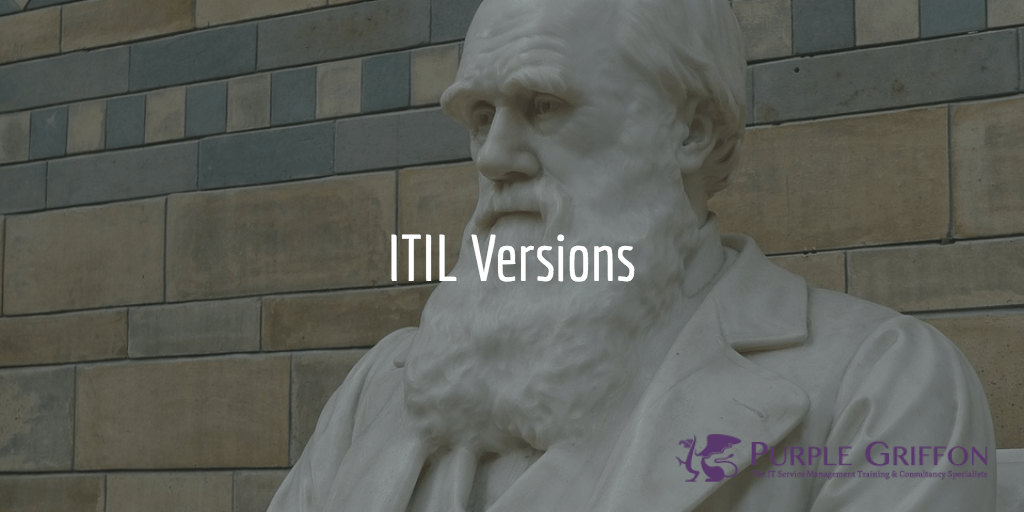
Since ITIL was first published in 1989, there have been several versions, or editions, as well as some updates and complete revisions.
ITIL v1
ITIL Version 1 (ITIL v1) was first published in 1989. From that date and up until 1996, the number of books quickly grew to more than 30 volumes.
ITIL v2
In 2001, the 30+ volumes of ITIL v1 were consolidated into a logical set of nine publications, with the explicit intention of making ITIL more accessible and affordable.
These nine publications were grouped and organised, with related process guidelines matching the different aspects of IT management, services, and applications.
ITIL v2 Glossary
In 2006, the OGC published the ITIL v2 Glossary, which provided definitions for the most important terms and acronyms used within ITIL and IT Service Management.
ITIL v3
ITIL v3, also known as the ITIL Refresh Project, was published in 2007 and consisted of five volumes, encompassing 26 processes and functions.
This edition of ITIL was focused on the concept of the Service Lifecycle structure.
ITIL v3 is also sometimes known as the ITIL 2007 Edition.
ITIL 2011
In 2011 an update to the 2007 edition of ITIL (ITIL v3) was published taking into account feedback from users, practitioners, and the training community.
It addressed various errors and inaccuracies within the 2007 publication.
Future Editions
AXELOS official guidelines now state that any future editions of the framework will not have a particular version or edition name and that all references to the framework should only refer to ITIL.
ITIL Training & Certification
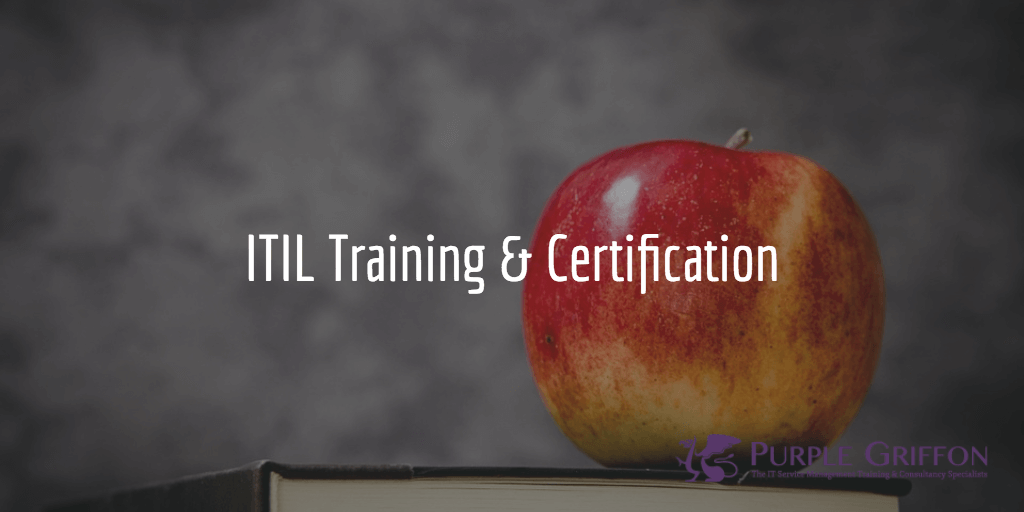
There are 13 official ITIL certifications and courses available for study and examination. Each will build on the knowledge gained from previous levels of study, culminating in ITIL Master
ITIL Foundation
The ITIL Foundation Certificate in IT Service Management (ITSM) will provide you with knowledge of the basic concepts contained within the ITIL framework.
It will develop your understanding of the structure of the framework and allow you to comprehend the core principles of ITIL practices.
Examination
The ITIL Foundation Examination is a multiple choice, scenario-based examination.
There are 40 questions per paper, with 26 marks required to pass, out of a total of 40, or 65%.
The examination is a maximum of 60 minutes long, and it is a closed book exam.
- Exam Type: Multiple Choice
- Questions: 40
- Required Pass Mark: 26 of 40 (65%)
- Duration: 60 Minutes
- Structure: Closed Book
ITIL Practitioner
The ITIL Practitioner Certification is a relatively new addition to the certification arsenal.
It is the next step in the process after attaining ITIL Foundation and focuses primarily on the practical, real-world applications of the framework.
Examination
The ITIL Practitioner Examination is a multiple choice, scenario-based examination.
There are 40 questions per paper, with 28 marks required to pass, out of a total of 40, or 70%.
The examination is a maximum of 1 hour 45 minutes long, and it is an open book exam.
- Exam Type: Multiple Choice, Scenario Based
- Questions: 40
- Required Pass Mark: 28 of 40 (70%)
- Duration: 1 Hour 45 Minutes
- Structure: Open Book (Official ITIL Practitioner Guidance Only)
ITIL Intermediate Level Certification
The ITIL Intermediate Level Certifications are organised in a modular structure, with each core module geared toward a different and specific focus.
The certifications can be taken in any order, and you can take as few or as many as is required.
Before you can take any of the intermediate courses or examinations you are required to undertake mandatory accredited training, namely the ITIL Foundation Certification.
There are two core streams available within the intermediate certification structure, the Service Lifecycle Stream, and the Service Capability Stream.
Courses can be studied by attending a classroom course, utilising online training, or via a mixed/blended approach.
Service Lifecycle Stream
The Service Lifecycle Stream focuses on the fundamentals of the core ITIL phases discussed earlier in this post.
Service Strategy (SS)
The ITIL Lifecycle Certificate in Service Strategy aims to provide IT Service Management (ITSM) professionals with a practical level of proficiency in the management of the Service Strategy phase of the Service Lifecycle.
Examination
- Exam Type: Multiple Choice, Scenario Based
- Questions: 8
- Required Pass Mark: 28 of 40 (70%)
- Duration: 90 Minutes
- Structure: Closed Book
Delegates will gain competence in the following:
- Introduction to service strategy
- Service strategy principles
- Service strategy processes
- Strategy Management for IT Services
- Service Portfolio Management
- Demand Management
- Financial Management for IT Services
- Business Relationship Management
- Governance
- Organizing for service strategy
- Technology considerations
- Implementing service strategy
- Challenges, critical success factors and risks
Service Design (SD)
The ITIL Lifecycle Certificate in Service Design aims to enable IT Service Management (ITSM) professionals to acquire the skills required in order to have a comprehensive understanding of the roles and processes outlined in the Service Design phase of the Service Lifecycle.
Examination
- Exam Type: Multiple Choice, Scenario Based
- Questions: 8
- Required Pass Mark: 28 of 40 (70%)
- Duration: 90 Minutes
- Structure: Closed Book
Service Transition (ST)
The ITIL Lifecycle Certificate in Service Transition aims to give IT Service Management (ITSM) professionals involved with the management and control of Service Transition to acquire an understanding of the concepts contained within the Service Transition phase of the Service Lifecycle.
Examination
- Exam Type: Multiple Choice, Scenario Based
- Questions: 8
- Required Pass Mark: 28 of 40 (70%)
- Duration: 90 Minutes
- Structure: Closed Book
Service Operation (SO)
The ITIL Lifecycle Certificate in Service Operation aims to give those involved with the management and control of Service Transition an understanding of the concepts contained within the Service Operation phase of the Service Lifecycle, as well as to gain competencies in:
- Service Operations Principles
- Service Operation Processes
- Common Service Operation Activities
- Organising Service Operation: Functions
- Technology Considerations
- Implementation Considerations
- Challenges, Critical Success Factors and Risks
Examination
- Exam Type: Multiple Choice, Scenario Based
- Questions: 8
- Required Pass Mark: 28 of 40 (70%)
- Duration: 90 Minutes
- Structure: Closed Book
Continual Service Improvement (CSI)
The ITIL Lifecycle Certificate in Continual Service Improvement aims to give IT Service Management (ITSM) professionals an understanding of the concepts contained within the Continual Service Improvement phase of the Service Lifecycle.
Examination
- Exam Type: Multiple Choice, Scenario Based
- Questions: 8
- Required Pass Mark: 28 of 40 (70%)
- Duration: 90 Minutes
- Structure: Closed Book
Service Capability Stream
The Service Capability Stream focuses on detailed process implementation, execution and management within specific areas of the Service Lifecycle.
Operational Support and Analysis (OSA)
The ITIL Capability Certificate in Operational Support and Analysis provides IT Service Management (ITSM) professionals with in-depth practical advice and guidance on functions, roles, activities, and process structure, as well as role specific capability and competency in:
- Event Management
- Incident Management
- Request Fulfilment
- Problem Management
- Access Management
- The Service Desk
- Technical Management
- IT Operations Management
Examination
- Exam Type: Multiple Choice, Scenario Based
- Questions: 8
- Required Pass Mark: 28 of 40 (70%)
- Duration: 90 Minutes
- Structure: Closed Book
Service Offerings and Agreements (SOA)
The ITIL Capability Certificate in Service Offerings and Agreements aims to give IT Service Management (ITSM) professionals an in-depth understanding of the concepts concerning process structure, functions, roles, and activities, enabling them to gain a capability and competency in:
- Service Portfolio Management
- Service Catalogue Management
- Service Level Management
- Demand Management
- Supplier Management
- Financial Management
- Business Relationship Management
Examination
- Exam Type: Multiple Choice, Scenario Based
- Questions: 8
- Required Pass Mark: 28 of 40 (70%)
- Duration: 90 Minutes
- Structure: Closed Book
Release, Control and Validation (RCV)
The ITIL Capability Certificate in Release, Control and Validation will provide practitioners with an in-depth and practical knowledge of concepts relating to process structure, roles, functions, and activities, gaining competency and capabilities in:
- Change Management
- Release and Deployment Management,
- Service Validation and Testing
- Service Asset and Configuration Management
- Request Fulfilment
- Service Evaluation
- Knowledge Management
Examination
- Exam Type: Multiple Choice, Scenario Based
- Questions: 8
- Required Pass Mark: 28 of 40 (70%)
- Duration: 90 Minutes
- Structure: Closed Book
Planning, Protection and Optimisation (PPO)
The ITIL Capability Certificate in Planning, Protection and Optimisation aims to give IT Service Management (ITSM) professionals an in-depth understanding of process structure, functions, activities, and roles, particularly competency and a capability in:
- Capacity Management
- Availability Management
- IT Service Continuity Management
- Information Security Management,
- Demand Management
Examination
- Exam Type: Multiple Choice, Scenario Based
- Questions: 8
- Required Pass Mark: 28 of 40 (70%)
- Duration: 90 Minutes
- Structure: Closed Book
Managing Across the Lifecycle (MALC)
As part of the required process in order to achieve an ITIL Expert certification, you must complete the ITIL Managing Across the Lifecycle Capstone Course, accumulating sufficient credits across a varied and balanced selection of ITIL subject areas.
Examination
- Multiple choice
- 10 questions per paper
- 35 marks required to pass (out of 50 available) - 70%
- 120 minutes duration
- Closed book.
ITIL Expert
This course brings together the culmination of knowledge that has been gained throughout the ITIL certification scheme.
In order to achieve ITIL Expert, you must first have completed the ITIL Foundation Certificate, several intermediate units, and the ITIL Managing Across the Lifecycle Capstone course.
You must have attained a total of 17 credit points via previous ITIL certification and education prior to undertaking the MALC course/exam, which provides an additional 5 credits along with the ITIL Expert accreditation.
ITIL Master
The ITIL Master qualification is a fairly new addition to the ITIL certification scheme.
This level of certification will thoroughly asses your ability to analyse and apply ITIL concepts in new areas.
You’ll be required to explain, and justify, how you have personally applied methods, principles, knowledge, and techniques from ITIL to achieve desired and specific business outcomes.
In order to attain this certification you will have to submit a Proposal, Work Package and have completed an interview with a panel of assessors.
ITIL Career Paths
The following diagram aims to demonstrate which aspects of the ITIL framework are applicable to job roles across an organisations ITSM teams. This will give you a view of the most suitable course(s) to focus on as part of your career development.
The ITIL Foundation course aims to provide an introduction to all aspects of the ITIL Lifecycle, so you will be able to gain an understanding of the processes having a direct impact on your role, in addition to the processes that have a dependency or influence on the process(es) you are responsible, or accountable for.
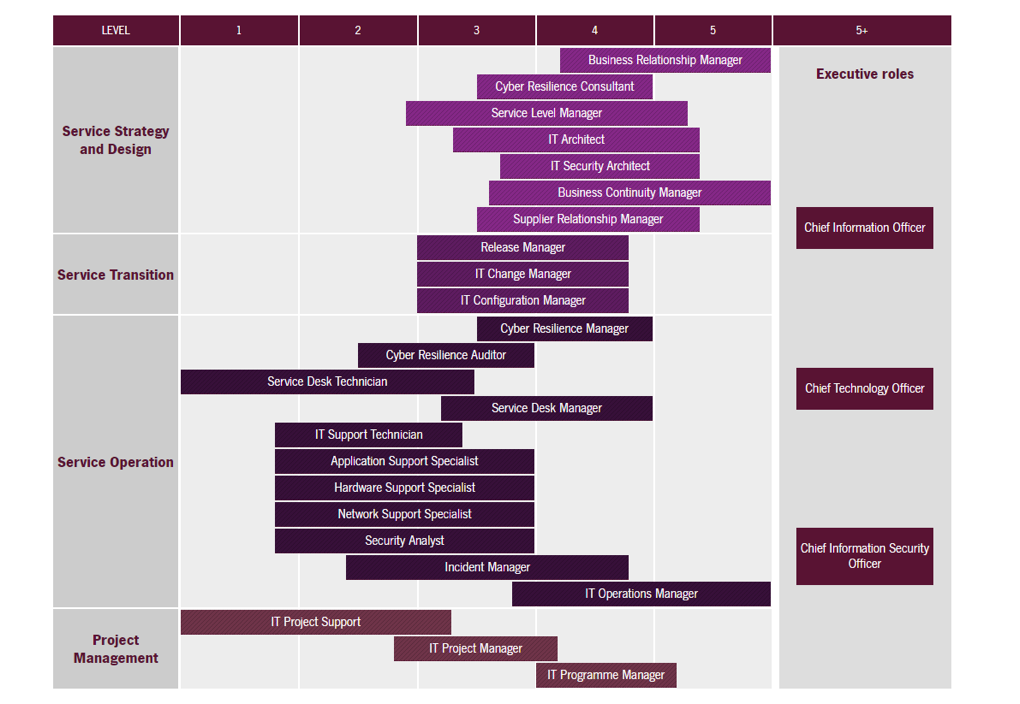
Adapting & Adopting ITIL
ITIL is the worldwide de facto standard for IT service management best practices, with many organizations around the world implementing ITIL practices. But why?
ITIL defines common concepts and terms within an integrated set of best practices that evolve in a cycle of continual improvement – as per Deming’s Cycle. Many organisations have demonstrated that they can adapt and adapt ITIL to their needs, because ITIL is flexible and scalable. So whether you are an SME or a large corporate enterprise, you should be able to implement specific parts of the framework in order to deliver business value.
ITIL is designed to focus attention on the needs of the customers, rather than on the technology issues. Increasing customer satisfaction provides a better and trusted relationship.
By adopting standards that are proven to work, service providers can more easily deliver services consistently to the agreed service levels, efficiently and effectively:
- Support teams can restore service faster, reducing downtime and disruption.
- Service providers are more capable of meeting their service levels, contractual, regulatory and legal compliance requirements.
ITIL provides processes and models to help service providers to work with their business, customers, users and suppliers to make business decisions on investment opportunities, cost optimisation, management of risks and priorities for improvement.
Typical benefits from implementing ITIL best practices are:
- Reduce support costs by 30%
- Increase incidents fixed at first call by 20%
- Increased value from service portfolio, with reduced cost and risk
Competitive advantage through value creation.
By adopting ITIL, organisations can focus on delivering value to the customer and quickly adopt change for the business and IT.
Typical benefits include:
- Reduction in cycle time for projects and changes
- Increased rate of changes implemented
- Reduction in risk from unplanned and late changes
The Importance of ITIL
A recent survey, undertaken by AXELOS (the accrediting body), showed that ITIL was adding value to the majority of organisations contacted. When asked to comment on the value that ITIL brought to a company, the following are the two top examples received:
- ITIL helps me work with others in unified processes
- ITIL helps me do my job with added context and insight
A trend has been recognised in that, to unify processes for managing IT and enterprise services together, this clearly demonstrates an opportunity for growth for ITIL best practices. Especially where a mature and consistent approach to service management can bring new levels of effectiveness across the business or organization.
The impact of Cloud on ITSM shows that respondents view Cloud first and foremost as a means for expanding ITSM capabilities.
Those with established teams uniting business and IT stakeholders were more than twice as likely to view ITIL as growing in importance.
The Future of ITIL
There have been many rumours, mainly from social media sources, suggesting that an ITIL v4 is already on the cards - which to be fair has been discounted by the official bodies.
But ITIL will need to continue to develop further as technology and business requirements change. As a result of this continual development, ITIL will need to ‘adopt and adapt’ to any new requirements that technological developments and advances will demand of it.
With reference to the AXELOS survey again, of the organisations that responded, 55% preferred modular changes to ITIL’s core in order to minimize disruptions, but still bring added levels of currency – versus 45% who believed that changing ITIL’s core was preferred.
So, we shall need to wait and see what the future holds for ITIL and ITIL professionals worldwide.


![ITIL: The Definitive Guide [Cheat Sheet] ITIL: The Definitive Guide [Cheat Sheet]](/uploads/post/images/itil-the-definitive-guide.png)